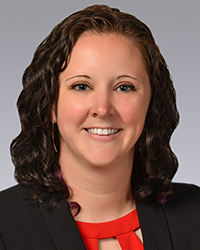News:
Northern New England
Posted: September 3, 2015
What the numbers tell us regarding New England workforce housing
One of the best ways to predict the future is to divine the present.
Rather than relying on tea leaves, the entrails of goats, or - worse - punditry, we turn instead to the dark art of math. Or, at least, arithmetic.
Consider these numbers concerning New England (2013 to 2014, source: CBRE):
* Population annual growth rate: 0.3%
* Labor force annual growth rate: 1.7%
The pants on fire pundits will tell you the sky is caving in on New England demographics, which is why we don't listen to them. These numbers tell you exactly what your opportunity is: housing! And in an area near to my own social conscience, workforce housing.
One does not need to have an Einsteinian gift to understand these figures: the labor force is growing at more than five times the rate of the population. Which means there are jobs here, which means there is money here, which means there is opportunity here...and now. (Which would explain all those cranes and orange cones that have cropped up all over the region.)
There is an unmeasured transient population which, were it to find adequate housing, might actually begin to resemble that "population growth" figure.
Not to put too fine a point on it, but median 2015 housing prices have increased 3.5%, double the rate of labor force growth. There is a demonstrable shortage of housing for the people who want to work here.
This number would be even higher, except there is one outlier: Maine, where the statewide growth is anemic - 0.6%. However, Portland is the outlier within the outlier; the city is bright with new-economy opportunities, low residential vacancy rates, and with a surge of investment capital.
Where to put it
The well published numbers, which the pundits even get right, is that the job growth is centered in the urban centers of New England. Boston is the driver, but Providence, Burlington, Portland, Manchester, and a resurgent Hartford have all added strong growth in office and retail footage.
And so you don't think we missed it: this "labor," much of which works in intellectually stimulating fields such as research, software, consulting, finance, and biogen, needs commercial space as well.
So the housing for all these workers will want to be in, or very near, the urban centers and accessible to public transportation and "sharing economy" resources such as ZipCar, Uber, and Lyft.
And where people live, they play. The creative opportunities expand to include facilities for restaurants, recreation, performance, services, and retail.
The commercial aspect
The capital markets in New England seem to finally get it. Once guilty of strangling the children of the 1980's Massachusetts high tech industry with 1930's banking practices, the region now has plenty of liquid debt and venture capital flowing into the area from private domestic and foreign sources.
Capital, of course, gives designers and commercial space entrepreneurs latitude to be creative and bold.
The opportunities to build landmark work, and to make a commercial space a dynamic and interactive part of your clients' enterprises has perhaps never been better. You don't have to visit Brooklyn, if you want to see what we mean. The poster child for this kind of activity is Kendall Square in Cambridge.
They'll be back
Much has been made of the transition of large segments of the population that have moved to the sunbelt. But much of this movement is retired baby boomers, who are draining the reservoirs and rivers of the west to water lawns and fill swimming pools in their suburban desert sprawl.
But new economy job growth is more evenly distributed, and New England has a significantly large share of it.
That's because we have what they want. Cities and sustainable urban infrastructure. And plenty of fresh water.
Thomas House, AIA, is principal for THA Architects, LLC, Stratham, N.H.
MORE FROM Northern New England
Biddeford, ME Reveler Development has begun construction on 10 Upper Falls Rd., the fourth and final phase of Reveler’s master-planned development in downtown,The Levee. “We’re thrilled to embark on this major milestone at The Levee,” said John Laliberte, CEO of Reveler






 (1) (1).png)





.png)


.png)